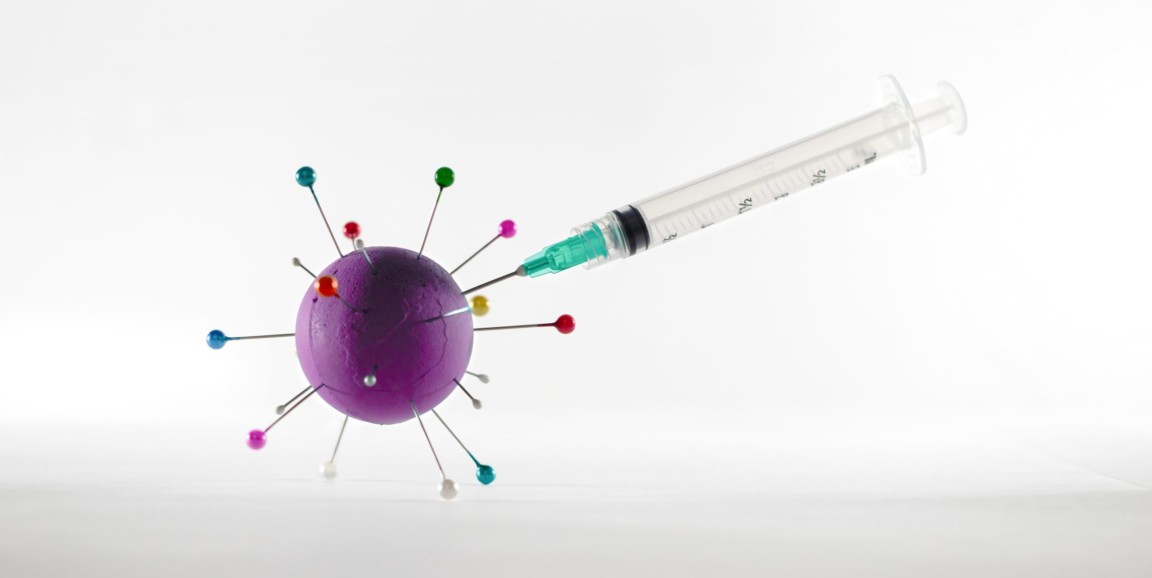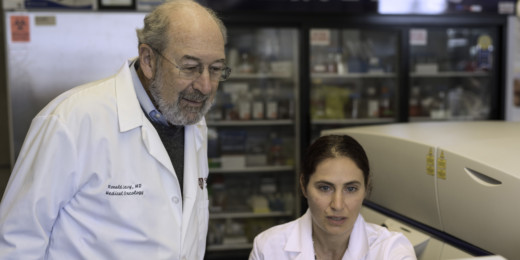Future historians will mark the development of the two-dose mRNA vaccines as a turning point in our global fight against COVID-19. The vaccines, which use an oily coating of nanoparticles to smuggle the genetic instructions for the viral spike protein into cells, have been undeniably successful at preventing serious illness and death.
But some people are sensitive to components of the coating, which stimulate the immune system even in the absence of mRNA.
Now immunologist and oncologist Ronald Levy, MD, and chemists Paul Wender, PhD, and Robert Waymouth, PhD, are exploring another way to get viral mRNA into cells using a novel technique I wrote about in 2018. They published their results recently in ACS Central Science.
As I described previously:
Waymouth and Wender came up with a transport system they've termed CART (for charge-altering releasable transporters) that enfolds the mRNA and ferries it across the membrane. Once inside, the transporters naturally degrade into neutral small molecules, releasing the mRNA to be recognized and translated by the cell's protein-making machinery.
The approach may make CART-based vaccinations more tolerable and more effective, the researchers feel. It may also be easier to manufacture CART-based vaccines.
Pivoting from cancer to COVID-19
The researchers devised the CART delivery system with an eye toward developing vaccines against cancer. Using the system, they've been able to teach the immune system of laboratory mice to recognize and destroy lymphoma cells throughout the animals' bodies.
When COVID-19 hit, they quickly realized that CARTs could also be used to deliver mRNA to trigger an immune response against the SARS-CoV-2 virus that causes the disease.
"Compared to cancer, COVID is more straightforward," Levy said. "We know the target, and it doesn't need to be personalized to a specific cancer type. Everyone gets the same vaccine."
The team quickly pivoted. Throughout the pandemic, the lab worked full blast, exploring what mRNAs to use, what viral protein to code for, and how and where to deliver it into the body, said Levy. "Our delivery agent is unique and different from what's used in the existing vaccines."
The researchers settled on using RNA that encodes for a portion of the viral spike protein called the receptor binding domain, or RBD. (Current mRNA vaccines include instructions for the entire spike protein.) They included an immune-stimulating molecule called CpG to ensure a good response to the vaccine.
When they tested the CART vaccine on laboratory mice they found that, within days, the animals began making antibodies that can neutralize SARS-CoV-2. In addition, RBD-specific immune cells called T cells appeared in the animals' lungs and, after about 100 days, long-lived memory T cells that patrol for any future exposure to the virus.
The first doses of the test vaccine were given intravenously, like the cancer vaccines the researchers had been working on. This delivered the vaccine to the animals' spleens, and generated a robust response. But intramuscular injections (the shoulder jabs we're all familiar with) also worked.
"These antibody and T cell responses in this case were on the order of those seen in people after one dose of the currently available mRNA vaccines," Levy said.
Targeting the future
It's not practical to vaccinate millions or even billions of people intravenously, so it's great news that the intramuscular injection works well. But it could be advantageous to target organs like the spleen.
"A very exciting and emerging aspect of CART delivery is the capability of CARTs to selectively target cells and organs," Wender said. "This is not required for most vaccination approaches, but imagine the potential of being able to deliver genetic instructions to the spleen, lung or brain. Organ-, cell- and organelle-targeted delivery opens many new ways to approach a wide range of therapeutic challenges."
It's also possible to modulate the immune response by adjusting the amount of CpG included in the vaccine, the researchers have found. "These are choices that can be dialed in or changed as the virus, and the global health situation evolves," Levy said. And because, unlike the lipid nanoparticles, the CART approach doesn't stimulate the immune system on its own, there is likely to be less worry about non-specific immune side effects after injection.
Mix and shoot
Levy, Wender and their colleagues don't envision a CART-based COVID-19 vaccine replacing the currently available mRNA vaccines. "Those vaccines have been extraordinarily successful globally," said Levy. "But there's always room for another option. Our ability to combat this and future pandemics could hinge on our ability to be flexible and have many redundant tools to fight infection in all circumstances."
One advantage of the CART approach is its simplicity to manufacture. Unlike the many ingredients needed to make the lipid nanoparticle coating of the other vaccines, Levy and his colleagues use just three components: the CART system, the CpG molecule and the mRNA encoding the genetic information to be presented to the immune system.
"These components can be mixed together just before injection in one syringe," Levy said. "Mix and shoot."
The researchers are planning larger animal studies of a CART-based mRNA COVID-19 vaccine in larger animal studies and, hopefully, human clinical trials. But they acknowledge that their work on a cancer vaccine gave them a head start on the current work.
"I have to give a big 'shout out' to the amazing, courageous and talented students and postdoctoral fellows, going back to the genesis of our efforts on mRNA delivery in 2013," Wender said. "Collectively, they teed things up not only for a new COVID vaccine but for a wide range of therapeutic opportunities that we are now pursuing."
Photo by Ivan Diaz






